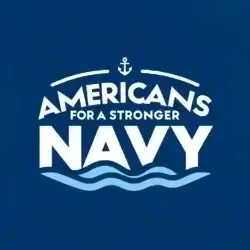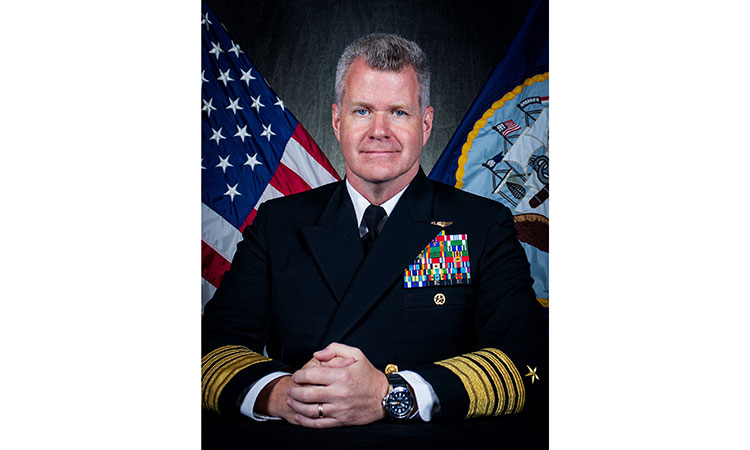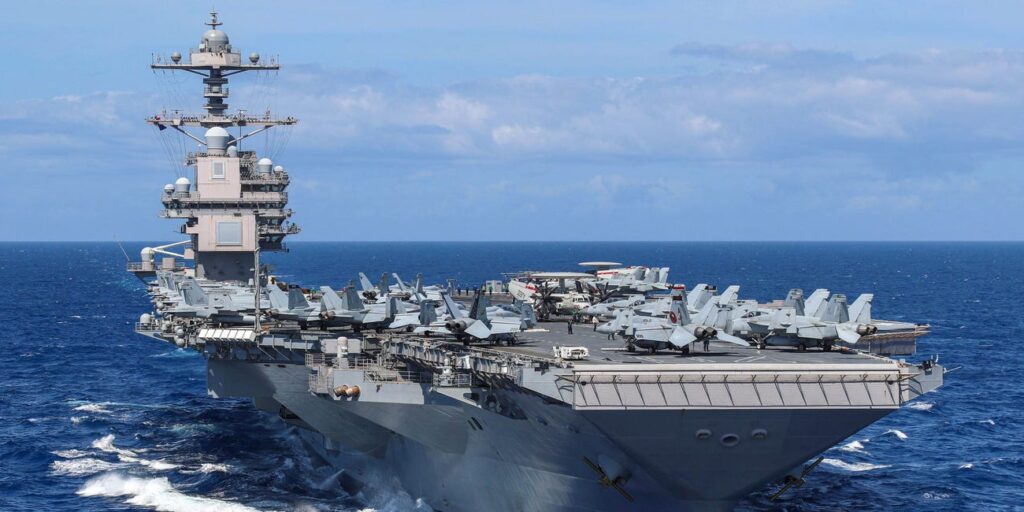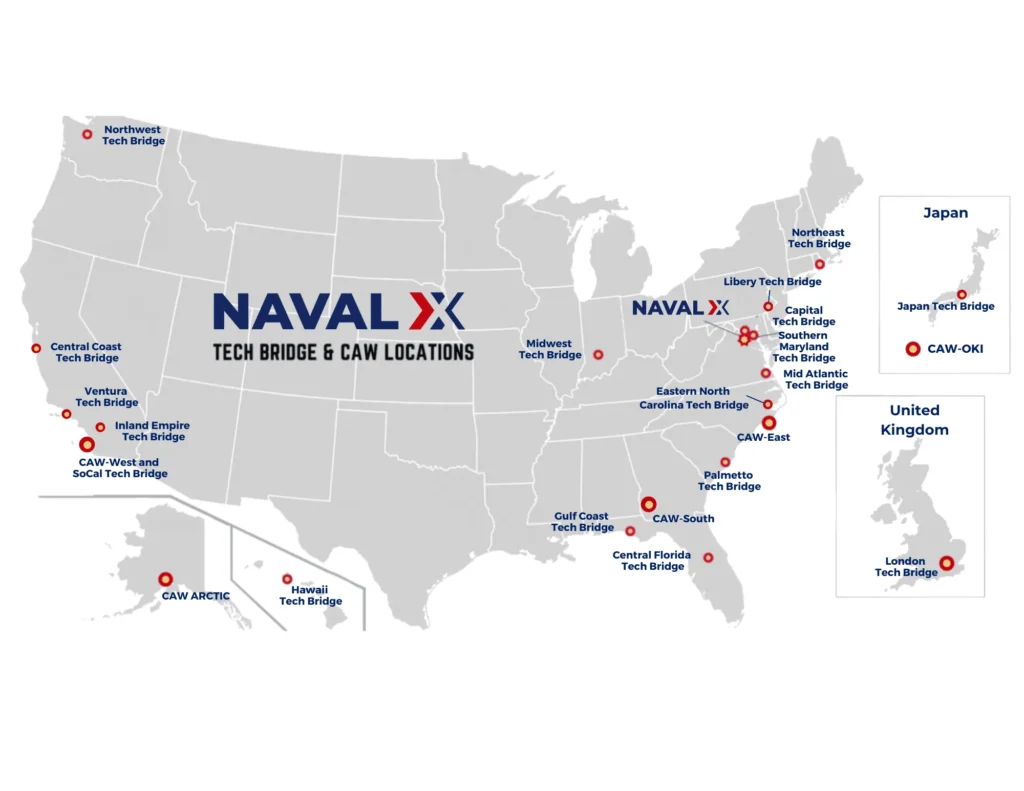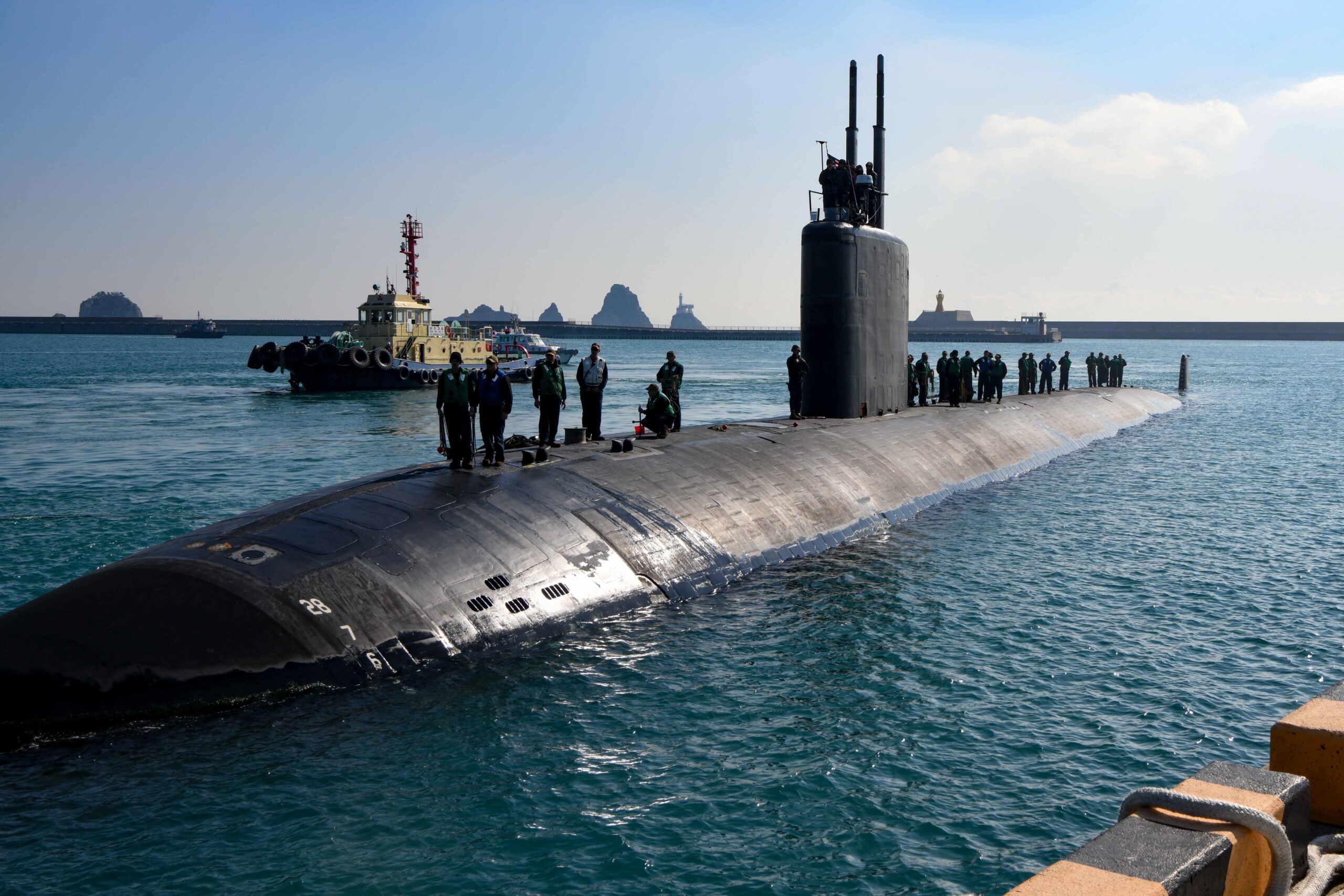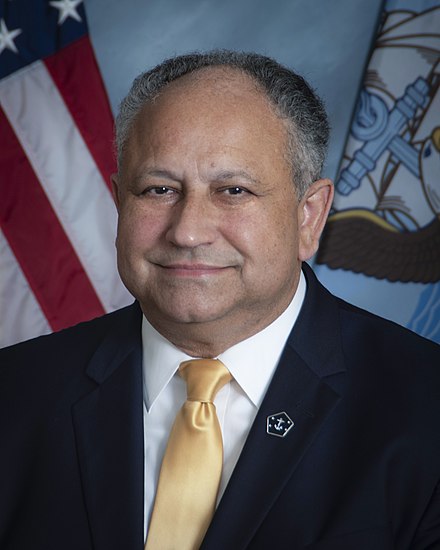
Secretary of Defense Lloyd J. Austin III announced today that the president has made the following nominations.
Navy Rear Adm. James P. Downey for appointment to the grade of vice admiral, and assignment as commander, Naval Sea Systems Command, Washington, D.C. Downey is currently serving as program executive officer for Aircraft Carriers, Washington, D.C.
About Rear Adm. James P. Downey
Rear Adm. James Downey is a native of New York. He is a 1986 graduate of the State University of New York, Albany, New York with a Bachelor of Science in Economics and Computer Science. He was commissioned in 1987 and is a 1997 graduate of the Naval Postgraduate School, Monterey, California with a Master of Science in Computer Science followed by Engineering Duty Officer (EDO) School in Port Hueneme, California, where he graduated with distinction and received the Founder’s Award.
He qualified as a surface warfare officer aboard USS Hayler (DD 997) in 1989. Additional operational assignments include intelligence briefing officer to the Commander in Chief, Combined Forces Command, U.S. Forces Korea , Seoul, Korea; and multiple deployments afloat in the North Atlantic, Baltic, Arctic Circle, and Pacific.
Engineering duty officer assignments include assistant program manager for surface and subsurface integration for GPS and Navigation Sensor System Interface programs, leading Tomahawk integration; chief engineer for high assurance systems at the Defense Information Systems Agency and National Security Agency; officer in charge of Space and Naval Warfare Systems Command , Yokosuka, Japan; CVN 21 program chief engineer, principal assistant program manager , and warfare systems director; CG(X) major program manager; and major program manager for the DDG 1000 program including delivery of the first ship of the class.
His first flag assignment was commander, Navy Regional Maintenance Center during which time he also served as Naval Sea Systems Command’s deputy commander for surface warfare. He assumed duties as program executive officer, Aircraft Carriers in June 2019.
Downey’s awards include the Legion of Merit (two awards), the Defense Meritorious Service Medal (two awards), the Meritorious Service Medal (two awards), and various other personal, unit, and service awards.
Naval Sea Systems Command
Naval Sea Systems Command (NAVSEA) is comprised of more than 86,643 (as of 1 Oct 2021) civilian and military personnel in 42 activities located across the United States and Asia. Together, we build, buy and maintain ships, submarines and combat systems for the U.S. Navy
Comptroller (SEA 01) provides financial policy, advice and quality services to ensure NAVSEA’s customers’ budgets are efficiently and effectively executed. SEA 01 manages appropriation areas as well as providing cost engineering, and industrial analysis.
Contracts (SEA 02) and its field contracting offices under the Contracts Competency award approximately $36 billion in contracts annually for new construction ships and submarines, ship repair, major weapon systems and services.
Cyber Engineering & Digital Transformation (SEA 03) has the responsibility for providing the infrastructure and support services for the programs and developers in the NAVSEA community. SEA 03 delivers combat power to the fleet through enterprise digital capabilities, infrastructure for cyber-secure digital work and innovation, and enhanced enterprise user’s experience.
Cyber Security: SEA 03 provides the NAVSEA Enterprise with guidance on cyber issues and ensures that all ships are able and ready to detect, defend and recover from cybersecurity attacks.
IT Services: SEA 03 maintains and facilitates Network Operations and IT Service Delivery for Headquarters NAVSEA end users to enable maximum productivity for NAVSEA civilians and military personnel in the support of the warfighter.
Digital Transformation: SEA 03 transforms NAVSEA digital capability adopting new digital technologies, capitalizing on data, increasing digital skills, and modernizing business processes.
Industrial Operations (SEA 04) has the important mission of getting ships to sea and keeping them ready. SEA 04 is the preferred integrator of maintenance and industrial operations for its Enterprise customers. SEA04 manages the four Naval Shipyards and the four Supervisors of Shipbuilding (SUPSHIPS).
Navy Drydocking: To request Navy Drydocking Reference Materials and/or the Navy Drydocking Course & Exam, contact NAVSEA’s Drydocking Safety Certification Representatives at (843) 794-7339 or (843) 794-7340.
The Naval Systems Engineering & Logistics Directorate (SEA 05) is responsible for providing the engineering and scientific expertise, knowledge, and technical authority necessary to design, build, maintain, repair, modernize, certify, and dispose of the Navy’s ships, submarines, and associated warfare systems. SEA 05 is organized into 16 groups:
Office of the Chief Engineer (SEA05B)
Cost Engineering and Industrial Analysis (SEA 05C)
Surface Ship Design and Systems Engineering (SEA 05D)
Explosive Ordnance Engineering (SEA 05E)
Integrated Warfare Systems Engineering (SEA 05H)
L&MW Warfare Systems Engineering (SEA 05M)
Undersea Warfare Systems Engineering (SEA 05N)
Ship Integrity and Performance Engineering (SEA 05P)
Readiness & Logistics (SEA 05R)
Industrial Engineering, Technical Policy and Standards (SEA 05S)
Technology Office (SEA 05T)
Submarine/Submersible Design & Systems Engineering (SEA 05U)
Aircraft Carrier Design & Systems Engineering (SEA 05V)
Surface Warfare Systems Engineering (SEA 05W)
Weapons Systems, Ordnance, and Explosive Safety and Security (SEA 05X)
Marine Engineering (SEA 05Z)
Undersea Warfare (SEA 07) provides a full spectrum of research, development, test and evaluation, HM&E systems engineering and fleet support services to the in-service submarine and undersea forces. Submarine/Undersea Warfare Technology (SUBTECH) coordinates the development of technologies to fulfill undersea warfare capability requirements.
Surface Warfare (SEA 21) manages the complete lifecycle support for all non-nuclear surface ships and is the principal interface with the Surface Warfare Enterprise. The directorate is responsible for the maintenance and modernization of non-nuclear surface ships currently operating in the Fleet. Through planned modernization and upgrade programs, SEA 21 will equip today’s surface ships with the latest technologies and systems to keep them in the Fleet through their service lives. Additionally, SEA 21 oversees the ship inactivation process, including ship transfers or sales to friendly foreign navies, inactivation and/or disposal.
Corporate Operations (SEA 10) performs all operations support for NAVSEA directorates and field activities as well as PEOs. Support includes administrative products and services, career planning, employee development, facilities, foreign military sales coordination, human resources, security, and university research assistance.

